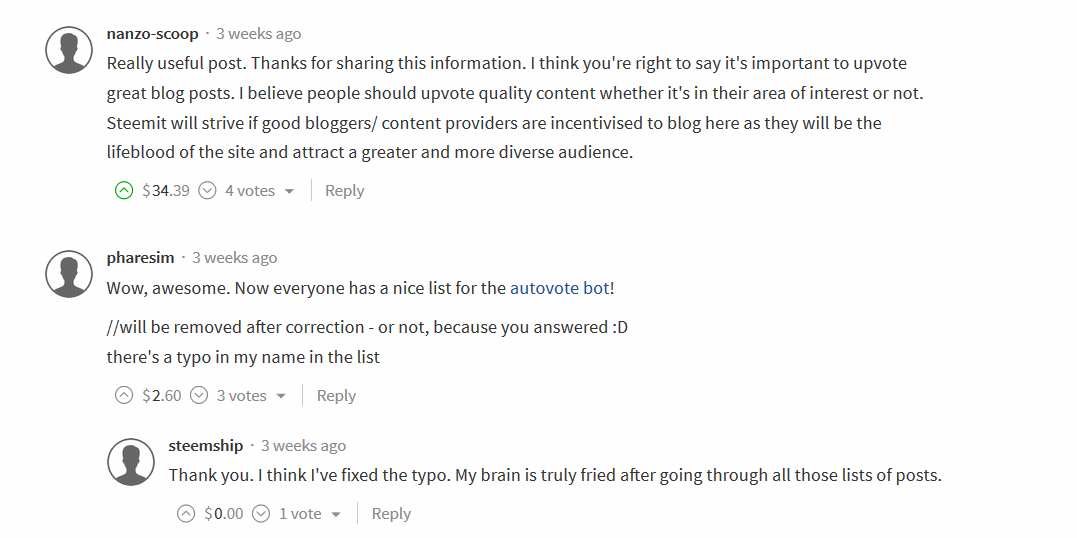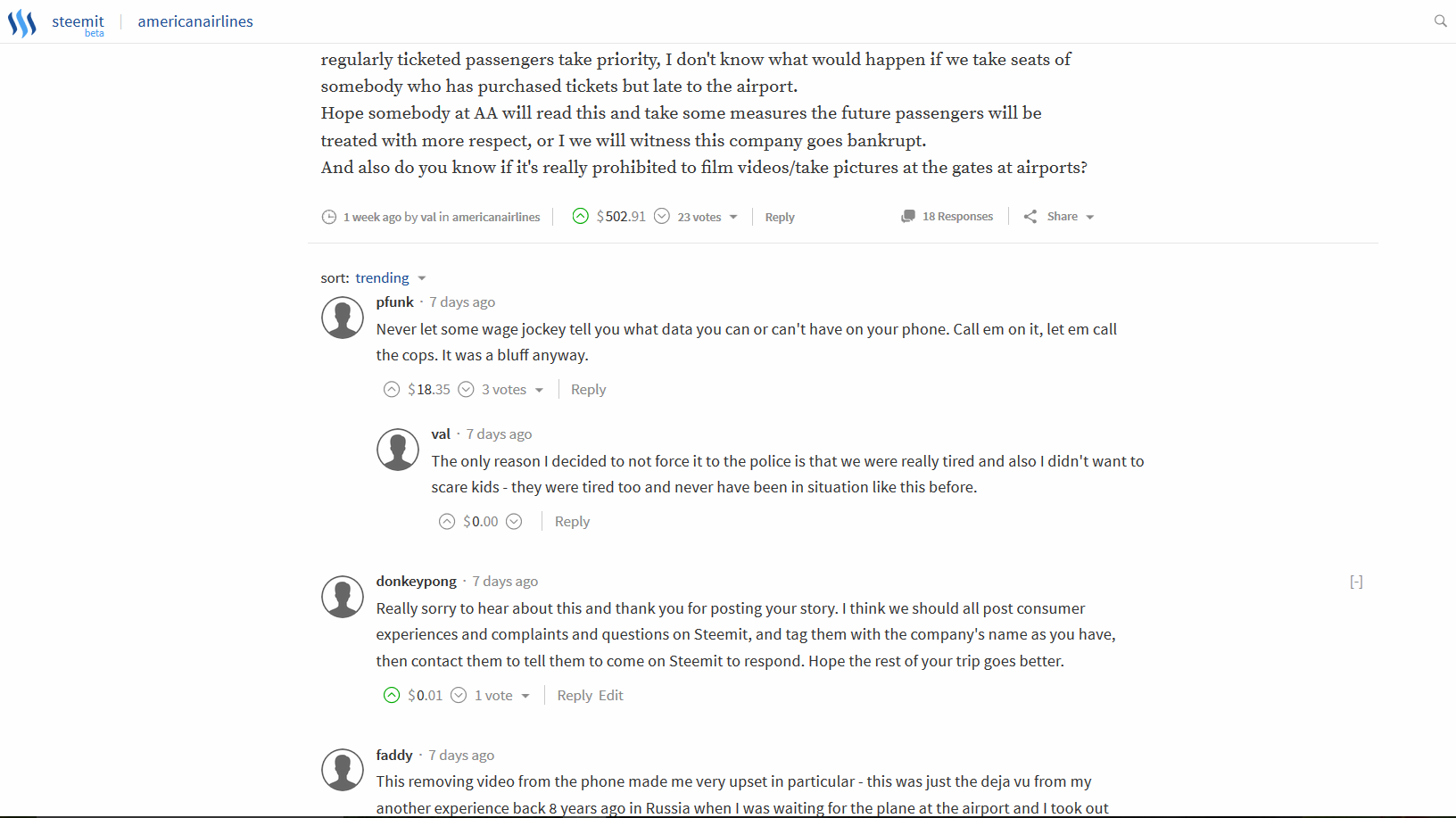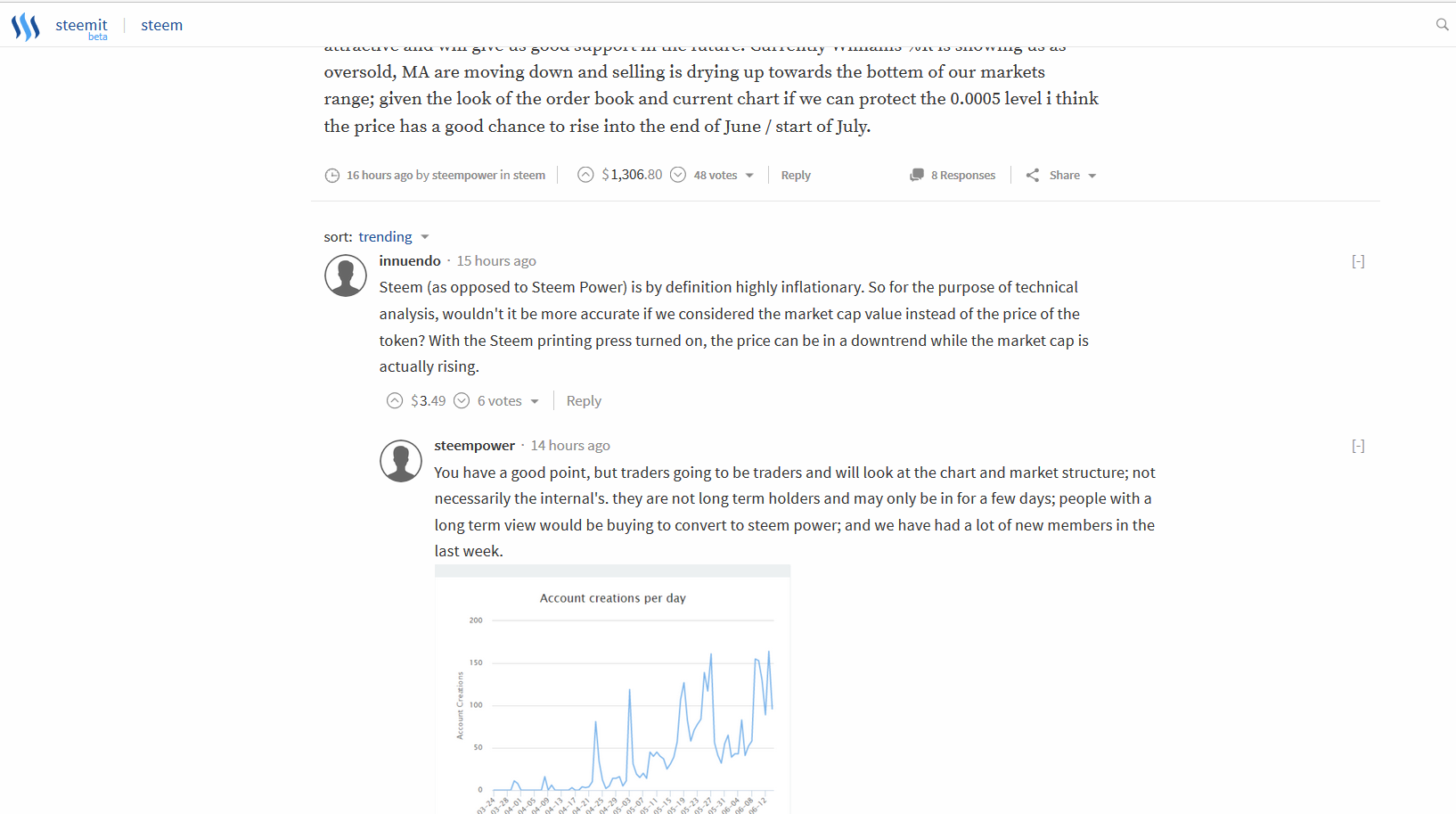
Commentators won the biggest prize yesterday, assuming the proposed changes are implemented. In the recent communication from the Steemit team announcing changes in curation rewards, the term “curation” was broadened to include not only “voting” but also “posting comments”. No aspect of curation scored a bigger windfall from this change than the reply comments on top-level posts.
You don’t need to write particularly well and you don’t need a trigger-finger on the upvote icons to make a nice income on Steemit anymore. Make some great comments and you can make some great money.
Comments are Kind of a Big Deal Now

I'm assuming that the team's proposed changes will be implemented, but even if not, it's probably fair to say that comments will be better rewarded than they were in the past. Let’s take a moment to consider what makes a popular comment. While it’s a great idea to post as many comments as you want on as many posts as you enjoy reading, quality is likely to be higher-paying for you than quantity. This article focuses on writing top-level comments which are likely to get a healthy share of upvotes.
Why did I just write ‘upvotes’? Because you’re going to get paid best when your comments receive enough upvotes that they receive a healthy portion of the curation awards allotted to that post. Quality beats quantity.
(NOTE: This example is based on the team's proposed changes to curation rewards, which may not be final yet. Please take it with a grain of salt. One way or another, comments are likely to be much more heavily rewarded soon.) Imagine there is a post with a $1,000 value listed. Let’s ignore the other parts of the payout and focus on what the commentators (or should we call them commenters?) would receive. Total curation awards are 50% for any post. And of that sum, 50% now goes to comments. Here’s another way of looking at that: of the new money being created each day in the Steemit economy, 25% of the total is now paid to commentators. So on the $1,000 post, its commentators would receive $250. That $250 will be distributed to the comments on the post, and the amounts distributed to each will be "proportional to the total amount of STEEM Power voting on the comment."
NOTE: I am quoting from yesterday's announcement, which you can read here, and the example I used was based upon the one in that post: @steemitblog/overhaul-of-curation-rewards
Before yesterday, commentators got very little unless they were upvoted by whales. So far, there hadn’t been a lot of comments posted or voted on. But suddenly, a share of Steemit’s wealth is being directed towards these rewards, which rightly stimulate conversation and discussion of the main posts.
After looking at what kinds of comments have been upvoted most heavily in the past, I have developed this tip sheet to help you.
Top 5 Tips
Tip 1. Spot popular posts and strike early. Yes, you are still rewarded for spotting good posts early. If a post is likely to get some votes and a good-sized payout, then the top comments should get upvoted and paid well also. The first comment or two have the best chance to claim this reward, though someone may come along later and write an even better reply. If you make a good reply post early and do it consistently, you won’t get rewarded every time, but on average you should score more hits than misses.
The following screenshot shows an example reply by @brandonp on one of @gardenlady’s posts that shows you the first good reply can pick up some votes. It also follows some of the other tips in this article.

Tip 2. Praise the post, if it’s good. Steemit is a positive place. We may disagree (see below), but the vast majority of the comments that have been upvoted in the past are replies which tell the original poster that he or she wrote a good article. Some voters will not take the time to write their own comments, especially if they basically say the same thing (“nice post”). But if they see that you have written something like this already, there is a much greater chance they will simply upvote your comment.
Have a look at this screenshot, which shows a response by @nanzo-scoop to a post by @steemship . It is a positive comment, basically thanking and agreeing with the poster, but taking care to state the reasons why. Striking early with a positive, thoughtful reply like this can get some upvotes.

Tip 3. Highlight and Respond. In your reply comment, you should write more than simply “Nice post.” Use your comment to highlight something the author wrote or respond to the points that he/she made. Was there something in particular you liked about it? Did you agree or disagree with the points this author made? Why? Be honest and give your opinion, pro or con. You can disagree if you want, as long as you are respectful. Different perspectives are healthy.
This story of a bad travel experience with a crummy airline by @val elicited some good replies (see screenshot below). I thought I’d made a pretty good response, which you can see there, even though at that time we didn’t get paid for comments (I have a heart, too!). But @pfunk’s reply was a stronger one, responding directly and pointedly to an aspect of the article. Other readers/voters who stopped by agreed that @pfunk’s reply was right on point.

Tip 4. Add useful information, correct something, or ask a question. Did the author misstate something? Leave out part of the story? Do you know something more about this topic that was not covered in the post? Maybe it was a good post otherwise, and you can tell them so, but point out something else the original author did not include or did not state correctly. This works great in technical postings, by the way, which have resulted in the most prolific reply comment chains so far on Steemit. Alternatively, if you thought the author just did not understand the subject well and made a mess of it, you can be honest about this also. Again, be respectful.
Example: Your post was very thoughtful. However, I think readers would appreciate knowing that there is a formula for this, which is…”
If you look back at the screenshot for Tip 2, above, you will see another comment on that post in which @pharesim points out an error.
The screenshot below shows one more example of this tip in action. Look how @innuendo added something by posing a question to @steempower’s article.

Tip 5. Aim for one paragraph in length. Sometimes, one sentence is enough, but there’s a good chance someone will come along and add to the conversation more meaningfully than you have (and then their comment will get the upvotes). One sentence does not show much effort. On the other hand, if you write too much, most people won’t read it (TL;DR), unless you truly have something useful to add that takes that much space to explain. From what we have seen on highly upvoted reply comments so far on Steemit, 2-5 sentences is a good target length. Some good ones can be shorter or longer, but this seems to be a good "ballpark estimate" based on the record of past comments.

The best thing about those examples above is that the responses were genuine and from the heart; I hope we can keep them that way. As Steemit evolves along with the curation rewards system, we will see new patterns emerge. For now, I hope this list of tips has been helpful to you. If you use this advice to make some great reply comments and make some money, we'll all be happy. Steemit is the free marketplace of ideas.
